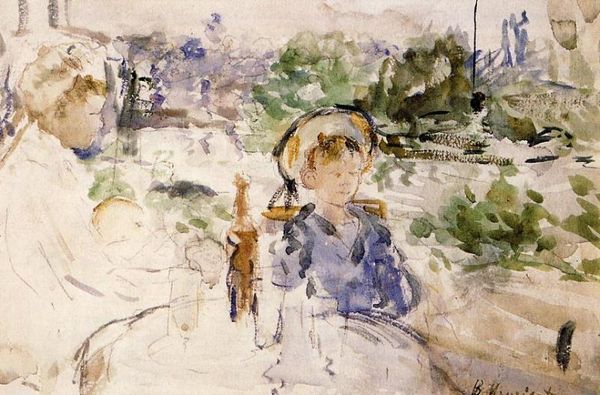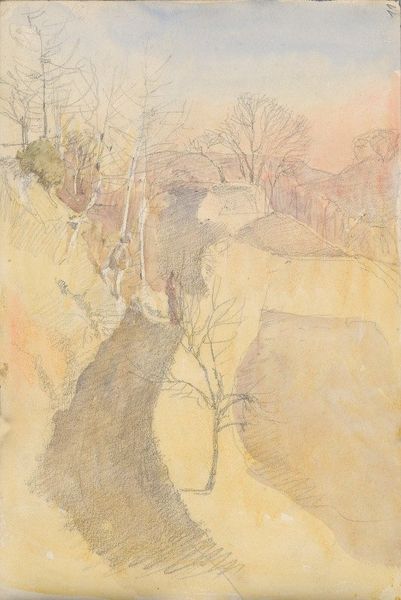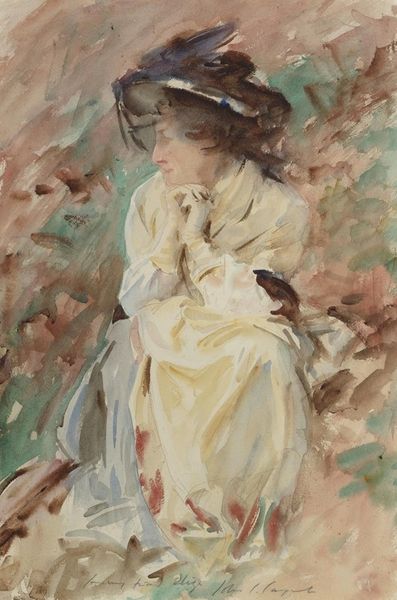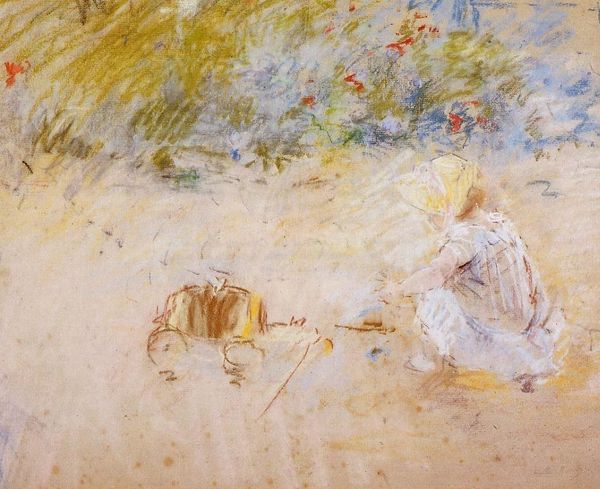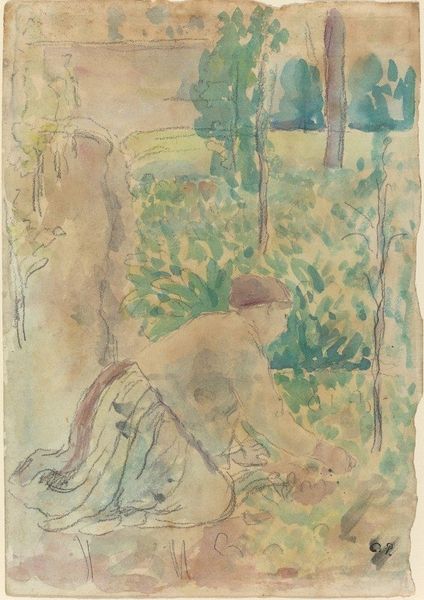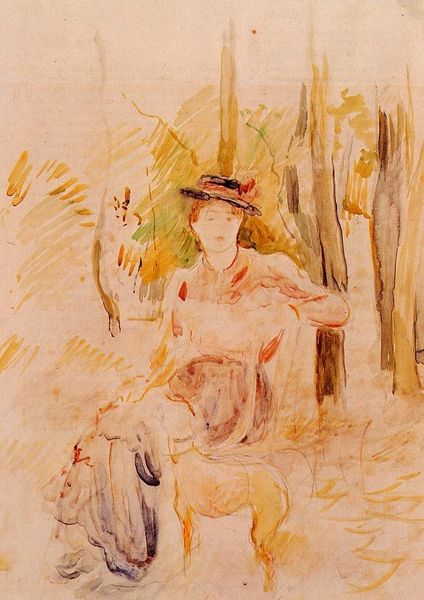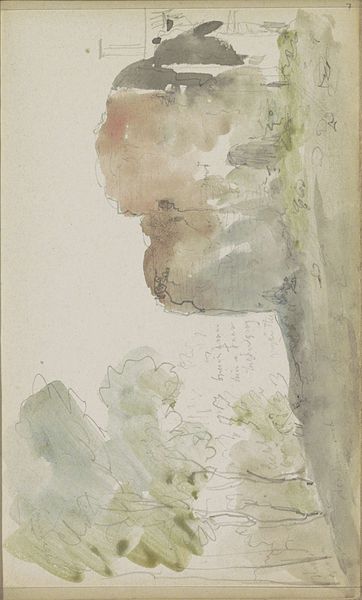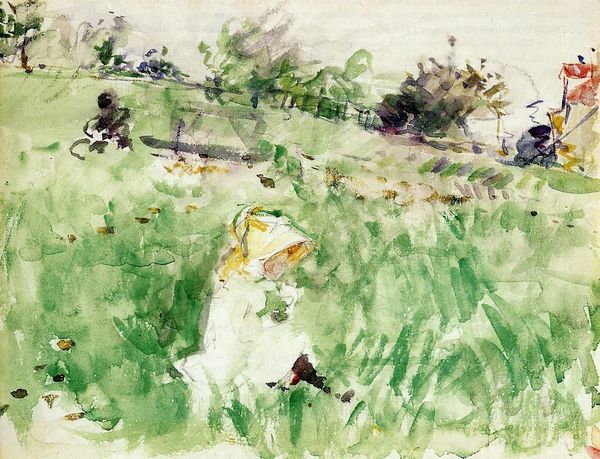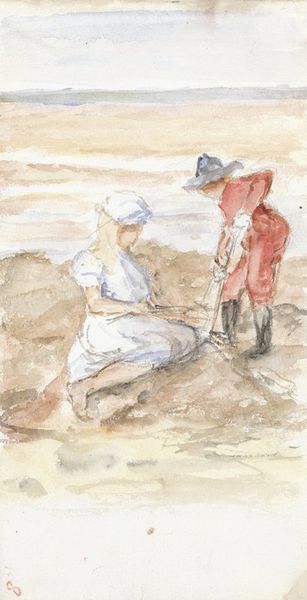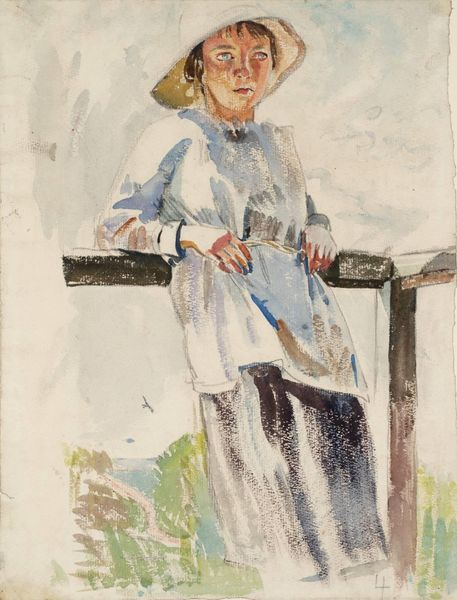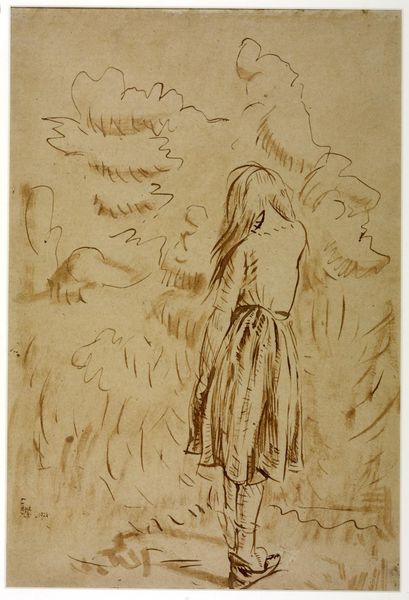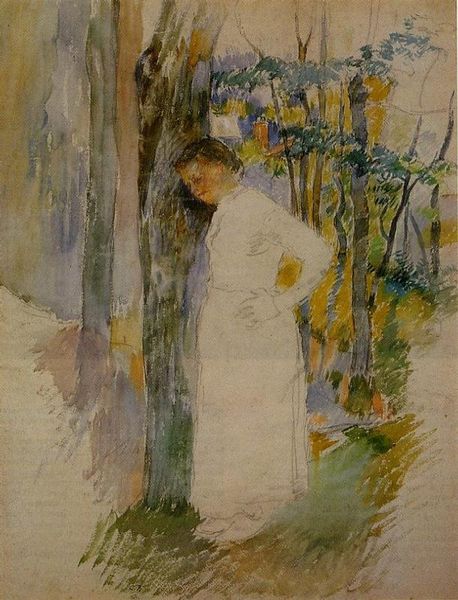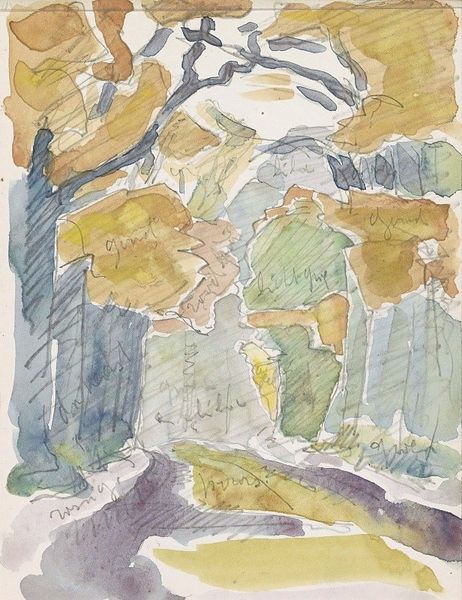
plein-air, watercolor
#
portrait
#
impressionism
#
plein-air
#
landscape
#
watercolor
#
intimism
Copyright: Public domain
Editor: We are looking at "Julie and Her Boat" by Berthe Morisot, a watercolor created in 1884. There’s a beautiful fragility to it, a certain impermanence, because it’s rendered in watercolor. What is your take? Curator: It’s tempting to view this delicate watercolour as simply a private, intimate scene. But remember, Morisot consciously chose to exhibit, inserting herself into a male-dominated art world. How might exhibiting "Julie and Her Boat," a seemingly domestic scene, challenge societal expectations of women artists at the time? Editor: I guess it suggests that women’s experiences, even quiet, domestic ones, are worthy of artistic attention, pushing back against the idea that only grand, historical subjects are important? Curator: Precisely. Morisot was critiquing the institutional frameworks that often excluded women’s perspectives. What also intrigues me is the deliberate "unfinished" quality, the visible brushstrokes, the suggestion rather than a firm definition. Editor: That resonates. It aligns with the Impressionist focus on capturing fleeting moments. Curator: True, but let’s consider how this aesthetic choice functions within the context of gender. Does it further feminize her work in the eyes of the contemporary art world or does it challenge preconceived notions? Are we looking at a subversion, a reclamation, or both? Editor: That gives me a new way to view the piece – beyond the simple image of a girl and her boat, there is the complexity of a woman negotiating the established world of art! Curator: Absolutely. And reflecting on Morisot’s strategies makes us consider how women today contend with social norms within different sectors of society, not just art.
Comments
No comments
Be the first to comment and join the conversation on the ultimate creative platform.
